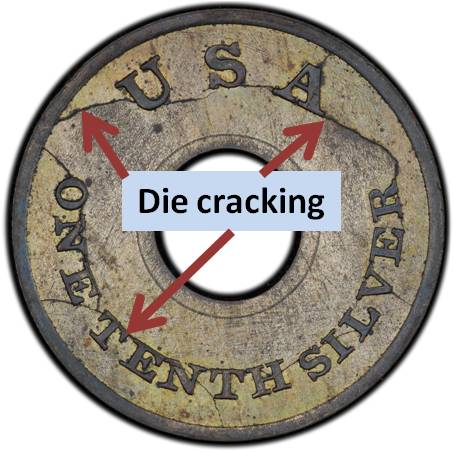Owner Comments:
 1850 1C
1850 1C
J-119 Original, Pollock-134
Rarity: Low R.6 PR63
Struck in billon (10% silver, 90% copper) with a plain edge and medal turn.
The annular cent pattern, with a largish hole in the middle. It is interesting to note that Judd describes the obverse in the convention manner, as the side with the date, while Pollock reverse the sides.
Obverse: displays the denomination CENT at the top, the date 1850 is at the bottom, two rosettes are on each side, and a perforation in the center. It is interesting to note that Judd describes the obverse in the convention manner, as the side with the date, while Pollock reverse the sides.
 Reverse:
Reverse: USA inscribe at the top and "ONE TENTH SILVER" around at the bottom. It is curious the the
U is not parallel to the rim on the inscription of USA. In the striking process of shattering and this piece shows the heavy die cracks that resulted.
Comment: Gray patina is seen over each side with bright, underlying silver-rose surfaces. A lovely example
With this pattern the Mint thought that a copper cent with a trace of silver, and in small diameter, could be produced to yield a profit. A problem with billon, was that the users of such coins had no way to notice the silver alloy, making them easy to counterfeit cheaply. Further, the making "holey" coins was a clumsy procedure.
Moreover, several years later on May 26, 1854, James Ross Snowden, then director of the Mint (since 1853), wrote to Secretary of the Treasury James Guthrie, noting that when eventually such billon pieces were redeemed after use, the cost of recovering the silver would exceed the value the silver metal obtained. Further:
"The mechanical difficulties in making ring cents are not trivial. They lie not in planchet cutting but in stamping in ejecting the coin from the dies. I estimate that most of the value of a cent so formed would be sunk in the cost of striking."
Provenance/ Appearances:
Heritage Oct 2016 - Dallas / Lot #3963